The 1914 Ford Model T, a name synonymous with innovation and accessibility, revolutionized the automotive industry and American society. This iconic vehicle, designed by Henry Ford, marked a pivotal moment in history, ushering in an era of mass production and widespread automobile ownership.
The Model T’s simple design, affordability, and reliability made it accessible to the masses, transforming transportation and fundamentally changing American lifestyles.
Beyond its technical advancements, the Model T became a cultural phenomenon, symbolizing progress and freedom. Its impact extended beyond the realm of transportation, influencing the development of roads, infrastructure, and even leisure activities. The Model T’s legacy continues to inspire generations of engineers and designers, solidifying its place as one of the most influential vehicles ever created.
The Ford Model T: A Revolution on Wheels
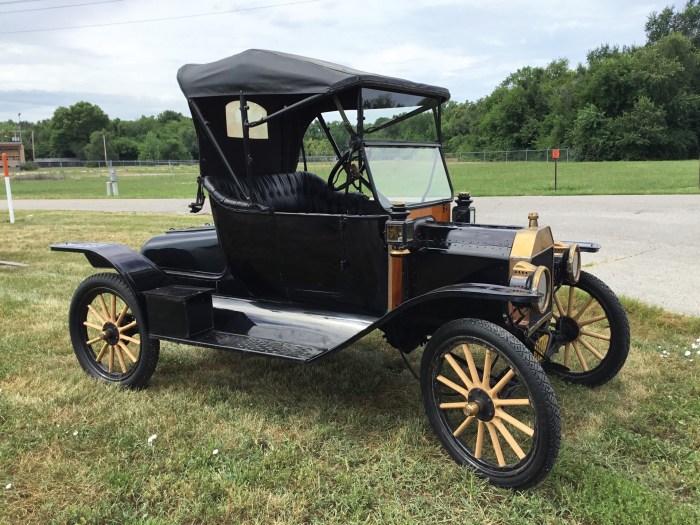
The 1914 Ford Model T, a seemingly simple automobile, holds a place of immense significance in history. It transcended its status as a mere vehicle to become a cultural icon, profoundly impacting American society and shaping the automotive industry as we know it.
The Model T’s revolutionary design, accessibility, and affordability made it the first truly mass-produced automobile, forever altering the landscape of transportation and ushering in the era of the automobile.
Impact on American Society and the Automotive Industry
The Model T’s influence extended far beyond the realm of transportation. It catalyzed a significant shift in American society, fostering a sense of mobility and independence that had never been experienced before. This newfound freedom allowed people to travel farther, explore new places, and connect with others in ways that were previously unimaginable.
The automobile’s impact on rural communities was particularly profound, breaking down geographical barriers and creating new opportunities for economic growth and social interaction. The Model T’s affordability also played a pivotal role in its widespread adoption. By employing innovative manufacturing techniques like the moving assembly line, Ford was able to significantly reduce production costs, making the automobile accessible to a broader segment of the population.
The 1914 Ford Model T, known as the “Tin Lizzie,” revolutionized transportation with its affordability and accessibility. While the Model T was a symbol of early automotive innovation, decades later, Ford continued to push boundaries with the iconic 1988 Ford Mustang.
This powerful muscle car captured the spirit of American performance, demonstrating Ford’s commitment to both practicality and performance throughout its history. The Model T’s impact on American culture and the Mustang’s lasting legacy stand as testaments to Ford’s enduring influence in the automotive world.
This unprecedented accessibility democratized transportation, making it a reality for the average American family. The Model T’s success spurred the growth of the automotive industry, creating new jobs, fostering related industries, and contributing to the overall economic prosperity of the nation.
Revolutionary Design and Engineering Features
The Model T’s revolutionary design was a testament to Henry Ford’s ingenuity and vision. It featured a number of innovative features that made it both reliable and affordable. Some of the key engineering innovations included:
- A simple, robust engine:The Model T was powered by a four-cylinder, 177-cubic-inch gasoline engine that was designed for durability and ease of maintenance. It produced 20 horsepower, sufficient for the car’s relatively light weight and modest performance requirements.
- A lightweight, durable chassis:The Model T’s chassis was constructed from sturdy steel, making it both strong and lightweight. This design contributed to the car’s fuel efficiency and overall performance.
- A simplified transmission:The Model T featured a planetary transmission with only two forward gears and a reverse gear. This simple design reduced the number of parts and made the car easier to operate.
- A standardized design:Ford’s commitment to standardization ensured that all Model T components were interchangeable. This made it easier to manufacture and repair the car, further contributing to its affordability and reliability.
Design and Features
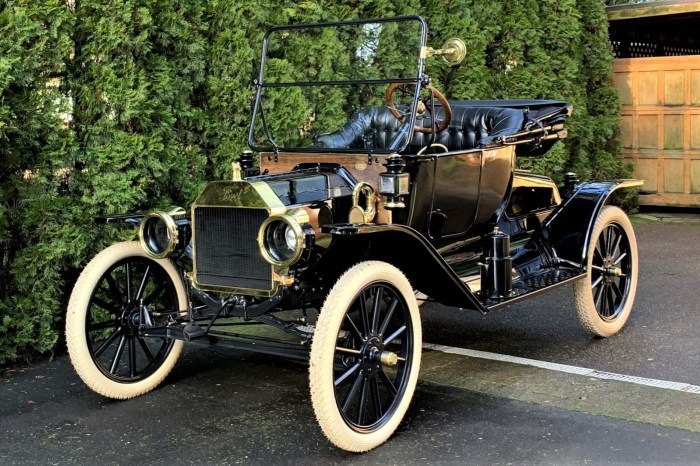
The Ford Model T, affectionately nicknamed the “Tin Lizzie,” was a revolutionary vehicle that forever changed the landscape of transportation. Its success stemmed from a unique combination of innovative design, mass production techniques, and affordability.
The Model T’s Engine
The Model T’s engine was a four-cylinder, 2.9-liter gasoline engine that produced 20 horsepower. Its simplicity and reliability were key to its success. The engine was designed to be easy to manufacture and maintain, with interchangeable parts. The Model T’s engine utilized a simple, durable design, with a cast iron block and head.
It featured a four-stroke cycle with a single overhead camshaft and a side-mounted magneto for ignition. This engine, while simple, provided reliable performance and was easily repaired.
The Model T’s Transmission, 1914 Ford Model T
The Model T was equipped with a two-speed planetary transmission, which allowed for two forward speeds and a reverse gear. The transmission was controlled by a lever on the steering column. The simplicity of the transmission contributed to the car’s ease of operation.
The Model T’s Chassis
The Model T’s chassis was made of a sturdy steel frame with a solid front axle and a live rear axle. The suspension system used leaf springs for both the front and rear axles, providing a comfortable ride. The chassis was designed to be durable and could withstand the rigors of driving on unpaved roads.
The 1914 Ford Model T, a revolutionary vehicle that democratized transportation, paved the way for the future of automobiles. Ford continued to innovate, and by 1936, they introduced the sleek and stylish 1936 Ford Custom , a car that embodied the spirit of the era.
While the Model T focused on affordability and practicality, the Custom emphasized luxury and performance, showcasing Ford’s commitment to evolution and meeting the changing needs of the American driver.
The Model T’s Design Compared to Other Cars
The Model T’s design was significantly different from other cars of the era. Unlike its predecessors, which were expensive, complex, and often unreliable, the Model T was designed for mass production and affordability. It was a simple, robust car that could be easily manufactured and maintained.
- Simplicity:The Model T’s design was characterized by its simplicity. It used a limited number of parts, which were all interchangeable. This made the car easier to manufacture and repair.
- Mass Production:The Model T was the first car to be produced on a large scale using assembly line techniques. This allowed Ford to reduce production costs and make the car more affordable for the average person.
- Affordability:The Model T was priced within reach of the average American. This was due to Ford’s efficient production methods and his commitment to making the car accessible to everyone.
Production and Impact
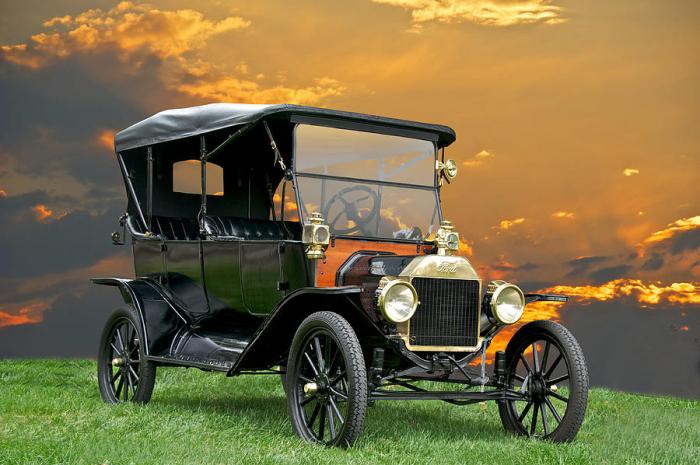
The Ford Model T’s production was a marvel of its time, a testament to Henry Ford’s vision and innovative manufacturing techniques. It revolutionized the automotive industry, transforming transportation and leaving an enduring legacy on American society.The Model T’s widespread adoption was fueled by a combination of factors, including its affordability, reliability, and adaptability to diverse terrains.
This section explores the production process, the factors behind its popularity, and the profound impact it had on transportation.
Production Process and Innovations
Ford’s innovative production methods, known as the “Fordism” model, were instrumental in the Model T’s success. The assembly line, a key component of this approach, allowed for efficient and cost-effective production, making the car affordable to a wider market.
- Assembly Line:Ford implemented a moving assembly line, a revolutionary concept at the time. This system broke down the car’s assembly into smaller, specialized tasks that workers could perform efficiently. Workers were stationed along a moving conveyor belt, each responsible for a specific step in the assembly process.
This approach dramatically increased production speed and reduced labor costs, making the Model T more affordable.
- Standardization and Interchangeable Parts:Ford’s commitment to standardization and interchangeable parts was another key innovation. Every Model T used identical components, simplifying production and reducing the need for skilled labor. This allowed for faster assembly and made repairs easier, enhancing the car’s reliability.
- Vertical Integration:Ford’s vertical integration strategy involved controlling all aspects of production, from raw materials to finished cars. This gave him greater control over quality and costs, further contributing to the Model T’s affordability.
Factors Contributing to Mass Adoption
The Model T’s widespread adoption was driven by a confluence of factors, including its affordability, reliability, and adaptability.
- Affordability:Ford’s production innovations made the Model T remarkably affordable. By 1924, the price of a Model T had dropped to $290, a significant reduction from its initial price of $850 in 1908. This affordability made car ownership a reality for many Americans, previously limited to the wealthy.
- Reliability:The Model T was known for its durability and reliability. Its simple design, using standardized parts, made it easy to maintain and repair. This reliability made it a practical choice for everyday transportation.
- Adaptability:The Model T’s versatility was another key factor. Its rugged design allowed it to navigate diverse terrains, making it suitable for both urban and rural settings. It was used for transportation, farming, and even as a mobile power source for electrical appliances.
Impact on Transportation
The Model T’s impact on transportation was profound. It democratized car ownership, making it accessible to a wider segment of society. This had far-reaching consequences, transforming American life in numerous ways.
- Increased Mobility:The Model T gave people greater freedom of movement, enabling them to travel further and more easily. This opened up new possibilities for leisure, work, and social interaction.
- Economic Growth:The widespread adoption of the Model T stimulated economic growth. It created new jobs in manufacturing, sales, and service industries. The development of a nationwide road network, fueled by the need for car travel, also contributed to economic expansion.
- Changing Social Landscape:The Model T played a significant role in shaping the American social landscape. It fostered a sense of individualism and independence, allowing people to break free from the constraints of public transportation and explore new places. The car also became a symbol of American prosperity and technological advancement.
Cultural Significance
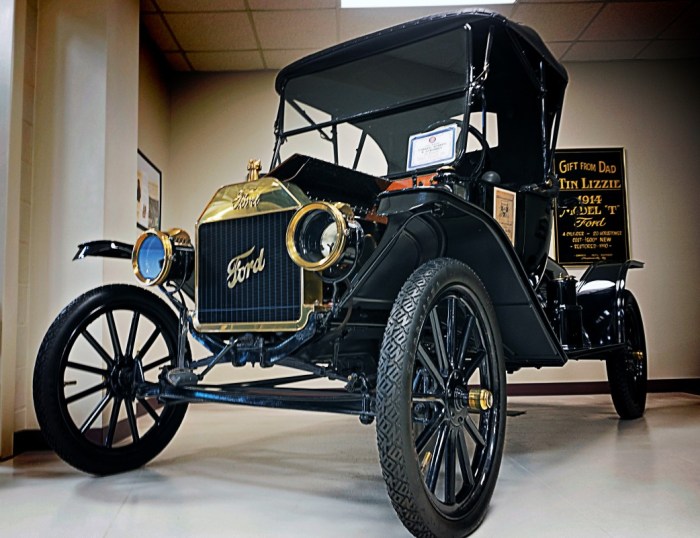
The Ford Model T transcended its status as a mere vehicle, becoming a cultural phenomenon that profoundly impacted American society. Its affordability and accessibility democratized transportation, ushering in an era of unprecedented mobility and reshaping the nation’s landscape, lifestyle, and popular culture.
The 1914 Ford Model T, with its revolutionary assembly line production, ushered in a new era of affordable automobiles. This iconic car, known as the “Tin Lizzie,” paved the way for the development of trucks like the 1947 Ford F100 , which became a mainstay for businesses and families alike.
While the Model T focused on accessibility, the F100 emphasized durability and utility, demonstrating the evolution of Ford’s engineering and design over the decades.
The Rise of Automobile Culture
The Model T played a pivotal role in the emergence of “automobile culture,” a distinct set of values, practices, and social norms that revolved around the car. This culture fostered a sense of freedom and adventure, allowing individuals to explore beyond their immediate surroundings and connect with distant communities.
- Road Trips and Leisure:The Model T facilitated long-distance travel, making road trips a popular form of leisure. Families could now embark on vacations, visit relatives, and explore new destinations, fostering a sense of national unity and shared experiences.
- Urbanization and Suburbia:The car’s affordability spurred suburbanization, as people could live further from city centers and commute to work. This led to the development of sprawling suburbs and the transformation of urban landscapes.
- Social Interactions and Dating:The Model T became a symbol of social status and a tool for courtship. Young people used cars for dates, driving to picnics, dances, and other social events, further cementing the car’s role in American culture.
Impact on Infrastructure and Roads
The Model T’s widespread adoption spurred the development of a robust road infrastructure. The need for paved roads to accommodate the increasing number of vehicles led to the construction of highways and the expansion of the national road network.
- Highway Construction:The rise of the automobile prompted the construction of highways, such as the Lincoln Highway, the first transcontinental road in the United States. These highways facilitated long-distance travel and trade, connecting cities and regions.
- Road Maintenance and Regulation:The Model T’s popularity led to the establishment of state and federal agencies responsible for road maintenance and regulation. These agencies developed standards for road construction and safety, ensuring the smooth flow of traffic and the safety of drivers.
Legacy and Evolution: 1914 Ford Model T
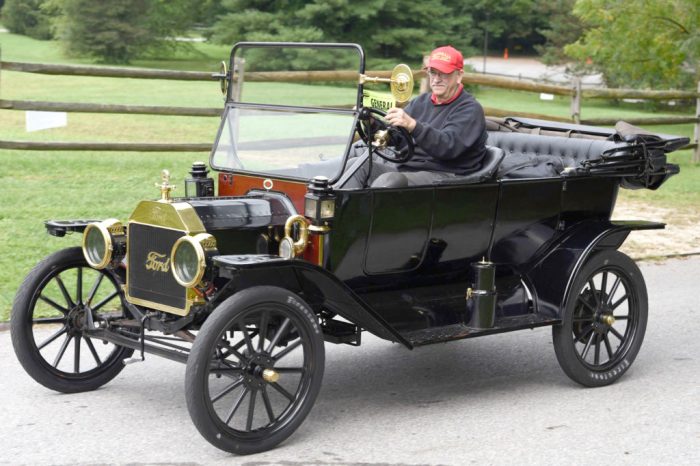
The Ford Model T, a marvel of engineering and manufacturing, not only revolutionized transportation but also left an enduring legacy that shaped the automotive industry and the world. The car’s innovative design, mass production techniques, and cultural impact paved the way for the modern automobile and influenced countless subsequent developments.
Successor Models and Innovations
The Model T’s success spurred Ford to continuously refine and improve its vehicles. While the Model T was initially marketed as a “universal car,” Ford recognized the need for a more diverse product line. This led to the development of a series of successor models, each building upon the Model T’s foundation with significant advancements.
- Model A (1927-1931):The Model A marked a departure from the Model T, featuring a more modern design with a conventional engine, a four-speed transmission, and a more comfortable interior. It introduced innovations such as hydraulic brakes, a starter motor, and a closed body, making it more user-friendly and appealing to a wider range of consumers.
- Model B (1932-1934):This model was a continuation of the Model A’s design philosophy, offering a more powerful engine and enhanced styling. It further solidified Ford’s commitment to providing affordable and reliable transportation for the masses.
- V8 (1932-1934):The introduction of the V8 engine in 1932 revolutionized the automotive landscape. This powerful engine, coupled with a streamlined body, transformed Ford into a major player in the luxury car market.
Impact on the Automotive Industry
The Ford Model T’s influence on the automotive industry is undeniable. Its mass production methods, using assembly lines and interchangeable parts, set a new standard for efficiency and affordability. This revolutionized car manufacturing, making automobiles accessible to a much broader segment of the population.
The Model T’s impact extended beyond manufacturing, influencing the development of infrastructure, such as roads and gas stations, and fostering the growth of related industries, such as parts suppliers and dealerships.
“The Model T was more than just a car; it was a symbol of progress, affordability, and the American dream.”
Cultural Significance
The Model T transcended its role as a mere mode of transportation, becoming a cultural icon. It embodied the spirit of innovation and progress, representing the dawn of the automobile age. The car’s affordability allowed millions of Americans to experience the freedom and mobility it offered, fostering a sense of national pride and economic prosperity.
The Model T’s impact on American society was profound, influencing everything from leisure activities to social interactions.
Last Word
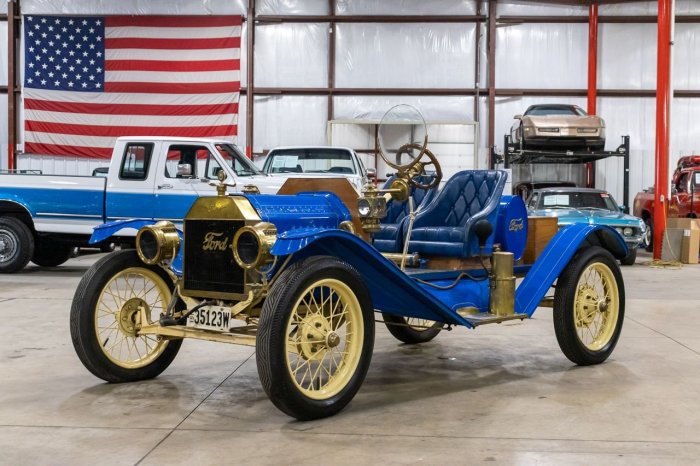
The 1914 Ford Model T stands as a testament to Henry Ford’s vision and the power of innovation. This groundbreaking vehicle not only revolutionized transportation but also profoundly shaped American society, paving the way for the modern automotive industry.
Its legacy continues to inspire, reminding us of the transformative power of technology and the enduring impact of a well-designed product.